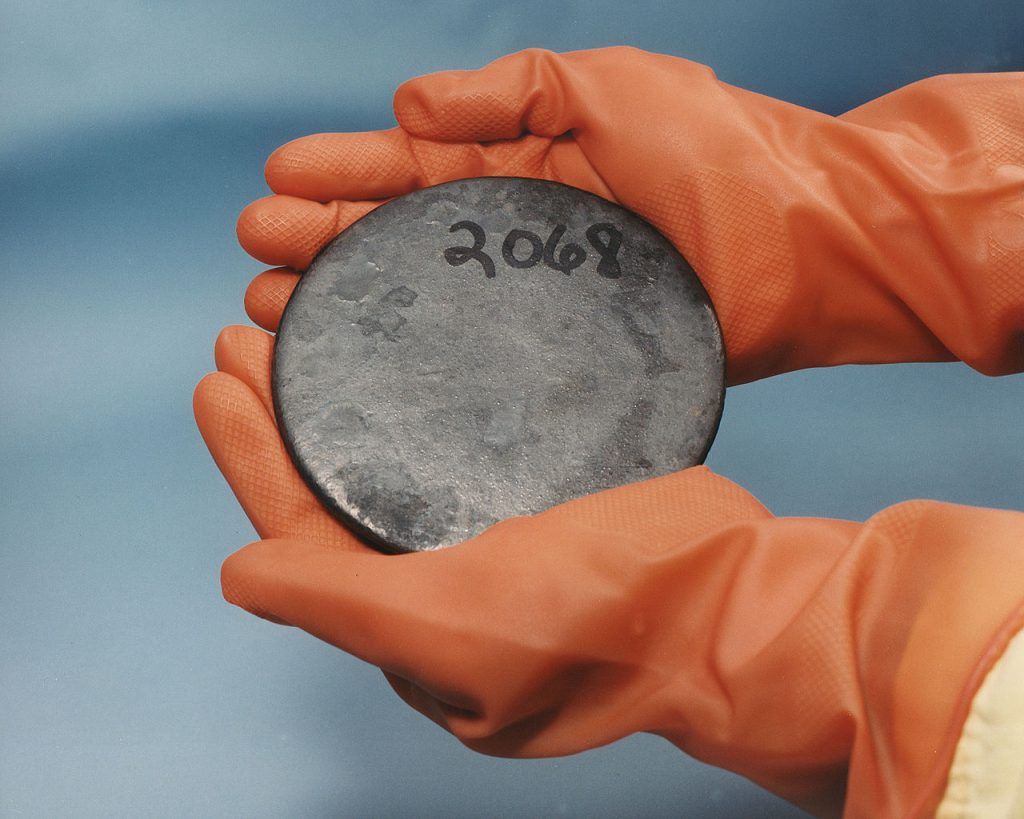How fissile material falls through the cracks
By Pavel Podvig | July 7, 2014

Most people would agree that keeping track of dangerous material is generally a good idea. So it may come as a surprise to some that the arrangements that are supposed to account for weapon-grade fissile materials—plutonium and highly enriched uranium—are sketchy at best. The most recent example involves several hundreds kilograms of plutonium that appear to have fallen through the cracks in various reporting arrangements.
Earlier this year, Masafumi Takubo, a Japanese researcher (and member of the International Panel on Fissile Materials), was putting together a report on the use of plutonium-containing MOX fuel in Japan’s nuclear reactors. What he discovered in the process was that the public record of Japan’s plutonium holdings failed to account for about 640 kilograms of the material. The error made its way to the annual plutonium management report that Japan voluntarily submits to the International Atomic Energy Agency (these are known as INFCIRC/549 reports). The 640 kg in question—not a trivial amount by any measure—were not included in the two most recent reports that Japan sent to the IAEA.
No plutonium was actually lost, and the IAEA was quick to confirm that its own safeguards, which are there to ensure that no nuclear material is diverted, were applied at all times. The fuel had been loaded into a reactor at the Genkai Nuclear Power Plant just before the March 11, 2011 tsunami that caused the catastrophic failure at the Fukushima Daiichi Nuclear Power Station. But since all reactors in Japan were shut down after that day, this fuel was never irradiated (which would have made the plutonium more resistant to diversion). As it turned out, the Genkai plant’s internal accounting system could not properly deal with such a situation, and the material ended up in the wrong column on a spreadsheet. The IAEA never discovered the error in the INFCIRC/549 reports simply because it does not rely on these documents to keep track of nuclear materials—it has an elaborate safeguards system to do so.
This episode may have been a simple clerical error, but it was yet another reminder of the troubling fact that we know very little about the amounts of fissile material that are circulating around the globe. The only reason the discrepancy was discovered in this case was the fact that Japan has been unusually transparent about its plutonium stocks. As the only non-nuclear weapon state that possesses reprocessing capability, it publishes fairly detailed annual accounts of its plutonium holdings. No other country does this, although eight others—Germany, France, Belgium, Switzerland, the United States, the United Kingdom, Russia, and China —join Japan in submitting annual INFCIRC/549 civilian plutonium reports to the IAEA.
These voluntary reports are a useful transparency tool, but they are not nearly sufficient to establish a good record of the global civilian plutonium stock, for several reasons. First, the reporting arrangement is not universal (not to mention that it is meant to cover only civilian material). Second, the reports only show the big picture, without going into important details. Third, reporting standards vary from country to country. For example, the United States includes excess military plutonium in its reports, while Russia does not. The United Kingdom appears to include its excess military material, but when and how it started doing so is not entirely clear. States also differ in their approach to reporting the plutonium that is loaded into reactors or sent abroad.
Finally, there is little to inspire confidence in the accuracy of the data. We can hope that countries manage their records well, but there is no way to verify that they are doing so. The United States has made several adjustments to its submissions. The researchers in Russia who deal with the country’s civilian plutonium say that since some of the material is decades old, the records may have very little to do with the actual status of the Russian stock. The error made by Japan was discovered only because of the availability of independent, more detailed, published national reports that no other country provides. To be sure, a significant portion of the global stock of civilian plutonium is under either the IAEA’s safeguards or Euratom’s, but the safeguarding agencies have no authority to release the information they have; they also feel no obligation to check the public data for accuracy.
The situation with highly enriched uranium (HEU) is even more complicated. Only three countries—France, Germany, and the United Kingdom—include information about their civilian HEU stocks in the INFCIRC/549 reports. Given that HEU is present in 30 countries, this is woefully inadequate. Some of this material is under safeguards, so at least we can hope that there is a record of it somewhere. But most of the HEU is in the military arsenals of Russia and the United States, so it is not covered by safeguards of any kind. Russia, the owner of what is believed to be the largest HEU stock, may not have run a physical inventory for quite some time, so even the Russian government may not know how much material it owns or where it is located. The United States has a much better record of its HEU stock, but that does not seem to mean that all US-origin material is accounted for. For example, in a recent effort to locate all HEU that it supplied to foreign research reactors, the United States was not able to track down about 1,600 kg of the exported material.
Despite the dedicated efforts of the US-led Global Threat Reduction Initiative to reduce the use of HEU in civilian applications worldwide, it appears that international trade in the material will continue for quite some time. The United States continues to supply HEU to Europe, and Russia seems to be willing to supply Europe as well. An attempt to reach an agreement on a set of HEU guidelines at the March 2014 Nuclear Security Summit has so far gone nowhere, and it is unclear if it will appear on the agenda when the summit reconvenes in 2016.
Fortunately, while the misreporting incident in Japan gave a glimpse of the sorry state of our knowledge on fissile material stocks, it also showed how the situation can be improved. For a start, states could begin providing more details about the plutonium holdings that they disclose to the IAEA as part of their INFCIRC/549 reports. Japan’s annual published accounts could be a good model for others to follow.
Reporting of HEU movements also needs to be improved. The 2016 Nuclear Security Summit should take on the problem and secure a corresponding commitment from its participants. In tackling the challenge, they could draw on the experience of the US Nuclear Regulatory Commission, which makes public HEU export licensing information.
None of these measures would compromise the security of the material. On the contrary, greater transparency would open national accounting systems to closer scrutiny, and thus help ensure that all fissile materials are properly secured and accounted for.
Together, we make the world safer.
The Bulletin elevates expert voices above the noise. But as an independent nonprofit organization, our operations depend on the support of readers like you. Help us continue to deliver quality journalism that holds leaders accountable. Your support of our work at any level is important. In return, we promise our coverage will be understandable, influential, vigilant, solution-oriented, and fair-minded. Together we can make a difference.














